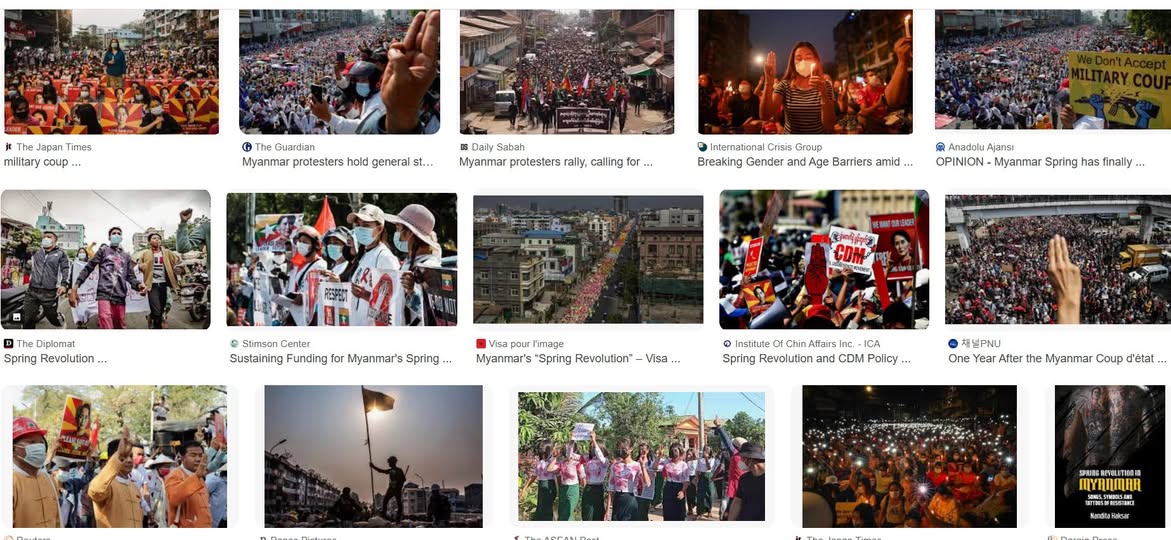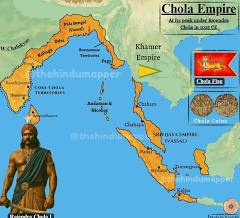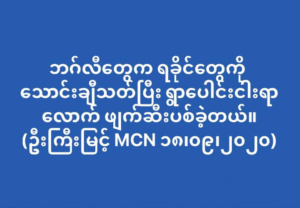An analysis by TRAZAR, translated and edited for MMNN
Editor’s Note:
This commentary by a Chin writer offers a calm, reasoned assessment of Myanmar’s ongoing Spring Revolution. It questions the recent ceasefires and shifting alliances of ethnic armed organizations (EAOs) and argues that the revolution’s true destiny lies not with military groups, but with the steadfast unity of the people themselves.
1. The Illusion of Unity Among Rebel Forces
From the very beginning, I have maintained that the revolutions waged by the MNDAA, AA, and TNLA were never truly part of the Spring Revolution. Their struggles predated it, and only later became intertwined in appearance, not in purpose.
Now, both the MNDAA and TNLA have ceased their offensives. Even at their peak, their ambitions remained local — limited to securing self-administered zones or political leverage, not nationwide transformation.
Before reaching even halfway toward their stated goals, the TNLA grew overconfident from its battlefield success and began quarreling with other revolutionary allies. When the junta launched its counteroffensive, no one came to its aid. Lacking the strength to resist, the TNLA signed a ceasefire and withdrew.
Its decision to stop fighting or resume later is not the answer to the Spring Revolution’s question — though its actions will certainly influence the broader struggle.
2. The AA’s Pragmatic Path
The Arakan Army (AA) has undeniably played a role in accelerating and reinforcing the momentum of the Spring Revolution. That contribution must be acknowledged.
Yet, we must also recognize that the AA’s political objectives differ entirely from those of the Spring Revolution.
The AA’s and the revolution’s interests have at times aligned — like two travelers resting under the same tree — but their destinations are not the same.
Whether the AA stops or continues fighting depends on the nature of its ultimate goal:
- If it seeks confederation, it may still cooperate for mutual benefit.
- If it seeks full independence, its path will inevitably diverge.
Either way, its decisions are not tied to the fate of the Spring Revolution.
3. Remembering the Past
Long before the Spring Revolution erupted, the AA had already been fighting for autonomy in Rakhine State.
After a ceasefire, it resumed its own separate struggle — not as part of the nationwide uprising, but to advance its regional aims.
In 2021, when Myanmar burned with protest and rebellion, Rakhine was the calmest region in the country. While the rest of Myanmar rose against the military, the AA ordered that no anti-junta protests or CDM participation be allowed in Rakhine.
The group even threatened those who resisted, cooperating with the junta at times and suppressing democracy activists, NLD members, and CDM participants. Those who refused to comply were detained and handed to the authorities.
4. Power Without Purpose Is Not Freedom
The AA is a strong and capable organization — bold in battle and tactically skilled. But it cannot be relied upon indefinitely, because its political vision diverges from that of the people’s revolution.
When allies’ destinations differ, separation is only a matter of time. Once the AA achieves its own aims, it will step away from the nationwide struggle.
5. The People Are the True Revolution
Therefore, whether TNLA, AA, or MNDAA continue or halt their wars does not decide the Spring Revolution’s fate.
The real answer lies in the hands of the people.
As long as the five core revolutionary forces — Kachin, Kayah, Karen, Chin, and Bamar — remain steadfast, the flame of the revolution will not die.
Its course may slow or shift, but it will continue moving forward, step by step.
Ultimately, the unity and determination of these five peoples — not the calculations of armed groups — will determine victory or defeat in Myanmar’s struggle for democracy and dignity.
— TRAZAR
Chin Political is with Mai Trazar.





